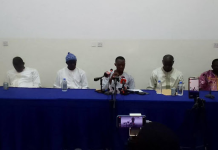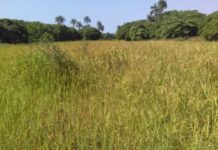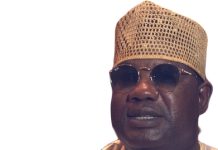By MUHAMMED S. BAH
The Minister of Finance and Economic affairs on Monday 5 December 2016, tabled before law makers the estimates of revenue recurrent and development expenditures for the year 2017.
recurrent and development expenditures for the year 2017.
This budget is expected to be scrutinized by the National Assembly and debate on it on Wednesday 14 December 2016.
This tabling was also witnessed by the Minister of health and the Minister of Transport, Works and Infrastructure.
Speaking to the NAMs when the tabling the Minister of Finance Abdou Colley said it is a legal requirement which is detailed in the 1997 constitution and the Public finance Act of 2014, for the Government to present its budget to the National Assembly.
The constitution requires the President to instruct the Minister of Finance to prepare and submit to the National Assembly, at least 30 days before the end of each Financial Year; the estimates of Revenues and Expenditures of the Gambia for the following year.
The Honourable Minister said the estimates shall include any estimates, which under the 1997 constitution, are to be submitted directly to the President by the Chief of Justice or any authority for presentation by the President of the National Assembly.
“During the period 2011-2015, average real GDP growth moderated to 2.4 per cent, well below the 5.6 per cent average growth registered over the period 2007-2010. This decline in the average real GDP growth is the result of shocks in the two main growth driving sectors of the economy – Agriculture and Tourism. Since 2011, Agricultural sector contribution has consistently declined, from 24 per cent to 21 per cent in 2015. The Services sector on the contrary, has seen its contribution increase from 62 per cent in 2011 to 64 per cent in 2015, whilst contribution of industry (15 per cent) remains unchanged over the review period,” he disclosed.
The Finance Minister added that this signals inadequate transformation and diversification of the economy, as a result increasing the vulnerabilities of the economy to external shocks in the two major sectors of the economy.
He said that Consumer price inflation decelerated to 6.0 per cent in December 2015, from 6.9 per cent in December 2014. This was primarily as a result of the decline in food inflation from 8.4 per cent in December 2014 to 4.8 per cent in December 2015.
According to Mr. Colley In contrast, non-food inflation increased from 4.8 to 5.2 per cent in December 2015. Central Bank of The Gambia’s measure of core inflation, which excludes the prices of volatile food items, utilities and energy, decreased to 6.7 per cent in December 2015 compared to 6.9 per cent in December 2014.
“However, downside risks of increases in international commodity prices such as rice, flour, sugar, oil prices, remain. In addition, a further depreciation of the Dalasi against the four major trading currencies may cause inflation to rise above the anticipated 5.2 per cent in 2017 before stabilizing to 5.0 per cent in the medium term” He disclosed.
The Government will therefore continue to consolidate the macroeconomic gains recorded during the past years. While the global environment remains challenging, Government remains steadfast and determined to pursue the fiscal, financial and structural reforms needed to steer the economy into a sustainable path.
He also noted that on the fiscal front, budget execution is mired by budget overruns, resulting in substantial domestic borrowing to finance the deficit. As of end 2015, Net Domestic Borrowing (NDB) reached D4 Billion dalasi, which is equivalent to approximately 10 per cent of nominal GDP. This, compared to a target of 1 per cent NDB to GDP, highlights growing fiscal pressures that have led to an unsustainable debt situation.
Foroyaa will publish the full text of the presentation by the minister.




















